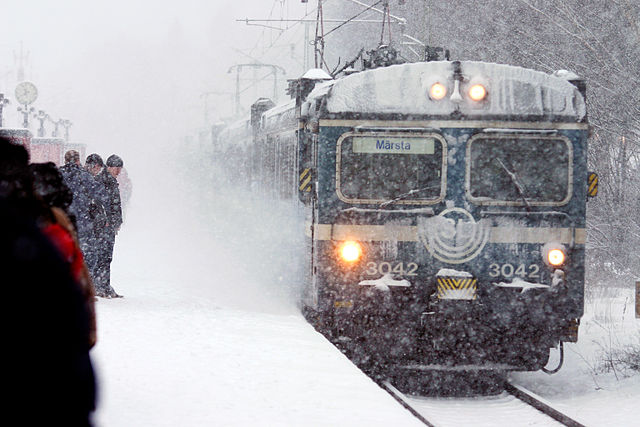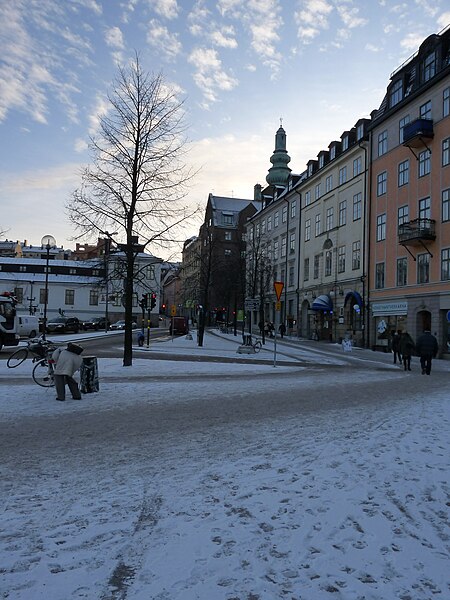
The Thammasat University Library has acquired a new book that should be useful for students interested in ecology, history, political science, law, technology, economics, geophysics, oceanography, meteorology, engineering, mathematics, philosophy, and related subjects.
Climate Book is by Greta Thunberg, a Swedish environmental activist who is known for challenging world leaders to take immediate action for climate change mitigation.
The TU Library collection includes other books about different aspects of climate change as well as another related book by Ms. Thunberg.
As the publisher’s description page explains,
You might think it’s an impossible task: secure a safe future for life on Earth, at a scale and speed never seen, against all the odds. There is hope – but only if we listen to the science before it’s too late.
In The Climate Book, Greta Thunberg has gathered the wisdom of over one hundred experts – geophysicists, oceanographers and meteorologists; engineers, economists and mathematicians; historians, philosophers and indigenous leaders – to equip us all with the knowledge we need to combat climate disaster. Throughout, illuminating and often shocking grayscale charts, graphs, diagrams, photographs, and illustrations underscore their research and their arguments. Alongside them, she shares her own stories of demonstrating and uncovering greenwashing around the world, revealing how much we have been kept in the dark. This is one of our biggest challenges, she shows, but also our greatest source of hope. Once we are given the full picture, how can we not act? And if a schoolchild’s strike could ignite a global protest, what could we do collectively if we tried?
We are alive at the most decisive time in the history of humanity. Together, we can do the seemingly impossible. But it has to be us, and it has to be now.

As the Associated Press commented,
Skipping school to sit outside the Swedish Parliament in 2018 with a sign reading “School Strike for Climate” at the age of 15, Greta Thunberg promised she would never stop calling out leaders and governments for refusing to take strong enough actions to mitigate climate change.
Fast forward five years and while Thunberg is no longer a teenager, she is as blunt as ever. “Leaving capitalist consumerism and market economics as the dominant stewards of the only known civilization in the universe will most likely seem, in retrospect, to have been a terrible idea,” she writes in “The Climate Book.”
Divided into five parts — How Climate Works, How Our Planet is Changing, How It Affects Us, What We’ve Done About It and What We Must Do Now — the book features 105 guest essays covering everything from “ice shelves to economics, from fast fashion to the loss of species… from water shortages to Indigenous sovereignty, from future food production to carbon budgets.” Thunberg’s goal is to raise public awareness by sharing the best available science to shine a spotlight on what we’ve done to the Earth and what we must do to keep it habitable by humanity.
Stuffed with charts and graphs and photos spread across two pages (all in black and white, a curious design choice), the book is sure to educate anyone who gives it an honest reading. Yet it’s difficult to shake a feeling of doom as you turn the pages. The current way of life in the “Global North,” as Thunberg calls the leading Western democracies responsible for most of the world’s carbon emissions, is not sustainable. If we continue to insist on flying around the world, eating authentic Japanese sushi in New York, driving our SUVs, and on and on, we will eventually change planetary systems to such a degree that life as we know it won’t be possible.
Some of the book’s contributors manage to balance the gloom with glimmers of hope. Writing about the remarkable events of the last few years, Canadian public policy researcher Seth Klein finds comfort in the global response to COVID-19: “We witnessed governments… creating audacious new economic support programs with a speed that few would have predicted.” If governments would take a similar approach to electrifying everything with green power, he argues, Homo sapiens might survive. As other essayists point out, however, it’s impossible until the largest governments in the world start treating the climate crisis like a true crisis.
And so hopefully billions of people read “The Climate Book” and enough of them rise up to demand change. 3.5%. That’s the magic number mentioned by Harvard political science professor Erica Chenoweth in her essay, “People Power”: “Among non-violent movements attempting to overthrow their own governments, none has failed after mobilizing 3.5% of their population to engage in mass demonstrations.” And in the end, that’s Thunberg’s ultimate prescription, too: “I would strongly suggest that those of us who have not yet been greenwashed out of our senses stand our ground.”
The Yale Climate Connections website suggests,
So what is to be done?
After an honest accounting of emissions and impacts, the next step, in Thunberg’s reckoning, is an honest appraisal of the solutions proposed for limiting global warming to 1.5°C.
Several essays in the fourth part of the book swiftly discredit “magic bullet” solutions like carbon capture and storage, biofuels, recycling, and geoengineering — the very sort of solutions championed by oil companies.
The only realistic solutions are already proven technologies, like wind and solar, as well as possible, if politically daunting, changes in human behavior. Several contributors advocate for radical social change. Others are more circumspect.
Citing the examples of the 2008 financial crisis and the supply-chain disruptions during the pandemic, journalist Eugene Linden, who contributed an essay based on his recent book, “Fire and Flood,” notes that “our global economy is a tightly coupled system … even minor disruptions can lead to devastating repercussions.” Thus attempts at radical social change, Linden acknowledged in an email exchange with Yale Climate Connections, could be as or more disruptive than the near or midterm impacts of climate change. By contrast, Linden applauded the radically experimental, but nonideological, way President Franklin Delano Roosevelt met the challenge of the Great Depression.
In her contribution to “The Climate Book,” political scientist Erica Chenoweth observes that a determined minority can be enough to tip a society toward change. She operationally defines “determined minority” as 25% of the population. Given that about 33% of the U.S. population already polls as “alarmed” about climate change, “determined” may be the more important variable in this calculation.
To succeed, this core group must move climate change much higher up on national and international lists of priorities. How much higher? As high as our defense budgets, Michael Oppenheimer said in his phone call with Yale Climate Connections. “In an economic dislocation, like the financial crisis, our military preparedness doesn’t shut down. That’s what climate change has to get to.” Spending on climate mitigation and adaptation must be regarded as essential, regardless of the current circumstances, which is how the U.S. treats defense spending.
For a determined minority to achieve this goal, the media must report on climate change with the same gravity it brings to discussions of defense and national security. In his contribution to “The Climate Book,” journalist George Monbiot excoriates “the media [as] the engine of persuasion that allows our Earth-destroying system to persist.” To undo this damage, the media must change the narrative and force governments to act on the problem it previously helped them ignore.
Thunberg encourages her readers, whom she invites to join with her in pushing hard for social justice and environmental sustainability, to wrestle with these issues themselves.
“You must take it from here and carry on connecting the dots yourself because, right there, between the lines, you will find the answers — the solutions that need to be shared with the rest of humanity. And when the time comes for you to share them, I would give you just one piece of advice. Simply tell it like it is.”

(All images courtesy of Wikimedia Commons)

